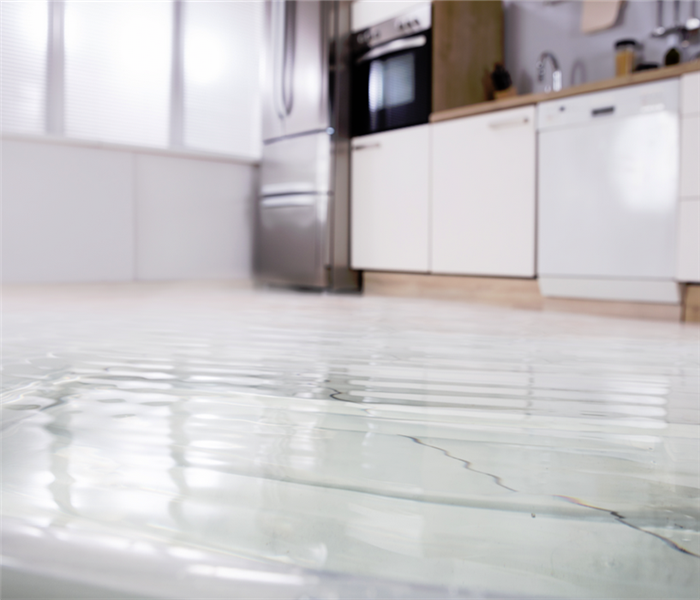What are the Stages of Water Mitigation for Cutler Bay Homes?
9/20/2020 (Permalink)
 Team SERVPRO fully evaluates the situation before taking action on your water damage emergency. Standing by to take your call 24/7.
Team SERVPRO fully evaluates the situation before taking action on your water damage emergency. Standing by to take your call 24/7.
Understanding what to expect before, during, and after mitigation can give you peace of mind with the restoration process after a water disaster.
Mitigation is a process designed to reduce the severity of loss conditions for Cutler Bay homes and businesses. With the likelihood of water disasters for area properties, the work that can alleviate some of the cost and time restoration requires can benefit homeowners. As with all recovery projects, there are actions that our SERVPRO professionals must take before vital mitigation, as well as follow up steps that can build on the work completed in this phase.
Understanding the full implications of water mitigation for Cutler Bay homes means appreciating the individual actions taken to reduce moving water, saturation, and structural deterioration. As a growing, reputable water restoration company for Miami-Dade County, our SERVPRO of Cutler Bay team has an extensive inventory of recovery tools and equipment as well as experienced technicians. Before we can utilize these to mitigate loss, our team must first determine the extent of the damage and the ideal approaches to restore it.
What Can You Expect When the Property Gets Evaluated?
Job scoping is a valuable aspect of water restoration for Cutler Bay area homes. The process gets conducted by our competent project manager, who can walk through the property with you to learn whatever possible about the work areas. Several vital pieces of information can get collected through the inspection and evaluation of the damaged property.
While homeowners can share critical facts about the damage with the staffed emergency line, we have several focal points to identify during a physical walk through the residence. This data gets inputted into our DryBook software for estimations and a baseline to establish drying progress moving forward. Job scoping identifies:
- Present water damages
- Structural concerns
- Hazards
- Content damage
- Pre-existing conditions
How Does SERVPRO Meet Drying and Restoration Goals?
After inspecting your property, our SERVPRO crew chief and project manager work on an effective restoration plan. This layout of the intended actions and use of specific equipment seeks to meet specific goals and milestones for drying and restoration throughout the entire process. When our efforts fail to meet the proposed deadlines and progress markers, more equipment, or varying approaches might be required to improve the processes' efficiency. We have several different areas where we must meet restoration goals, and these do not exclusively relate to drying.
- Moisture Content – When we first review the property, we can establish the initial moisture content readings for materials and the environment. Each affected area might require different lengths of time to show drying progress.
- Content Cleaning – While relocation can positively affect preventing irreparable damages to your personal belongings, cleaning is often necessary both on and off-site. Meeting restoration expectations is getting items into safe, dry storage as soon as possible.
- Structural Repair/Replacement – It is often not challenging to identify many of the structural elements that require removal and replacement when mitigation begins. Progress in this regard is established in two primary timelines: controlled demolition and reconstruction.
- Customer Concerns – Your specific requests and priorities are a different motivation for restoration progress evaluations. We seek to meet your expectations as quickly as possible to put you at ease in a challenging time.
What Tools Are Commonly Seen in Mitigation?
The actual mitigation process encompasses several necessary actions designed to make later restoration more efficient. While many consider water removal and extraction to be the heart of this process, several tools and techniques can help recover and restore your damaged residence in this phase, including:
- Desiccant Dehumidifiers – Desiccants are not the only type of dehumidifiers available to our SERVPRO team, but they are preferred with their ability to exhaust warm, dry air back into the work area to increase evaporation of materials in the drying zone.
- Extractors – Water removal is critical to protecting exposed materials and contents in the house. Submersible pumps can be a popular choice for this extraction.
- Wet Vacuums – Wet debris and material remnants around the house can be a challenging threat for restoration and a catalyst for microbial growth. Wet vacuums can remove these solids.
- Detection Devices – Continued monitoring of the drying process is vital to track the progress of evaporation and the possibility of preserving exposed structural elements or contents.
As vital as mitigation is to reduce out-of-pocket expenses, many homeowners delay calling our SERVPRO of Cutler Bay team to attempt cleaning and recovery on their own. Our professionals are available 24/7 to help save you time and money at (305) 278-8484.



 24/7 Emergency Service
24/7 Emergency Service